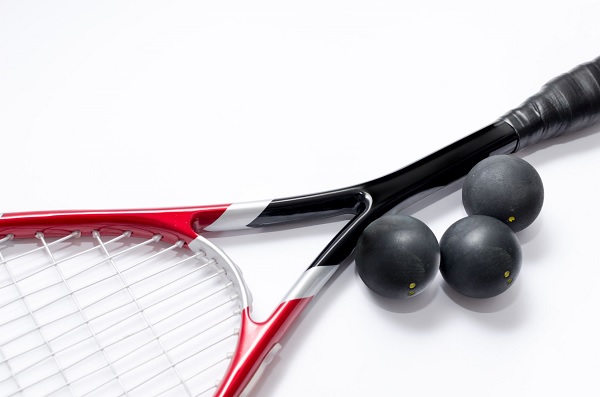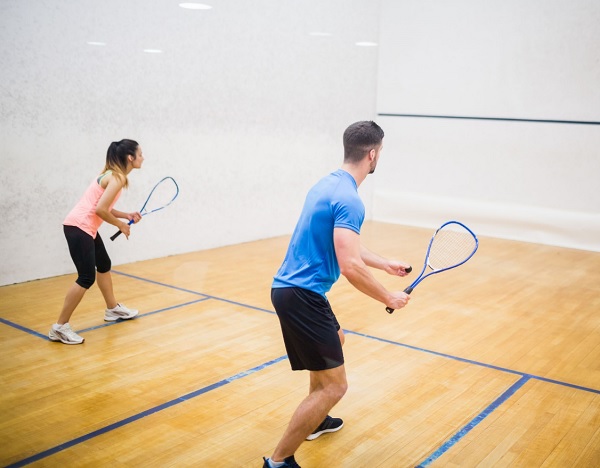Squash – Equipment
In this chapter, we will discuss about the equipment used in Squash.
Squash Rackets
Rackets are used to hit the ball on the walls. Previously, timber ash was used to make the rackets and gut strings were used to make the mesh. Now the rackets are made up of boron, Kevlar, graphite, or titanium. The strings are made up of synthetic material. The length of the racket is 686mm and width is 215mm. The strung area is 500 sq. cm. The maximum weight of the racket is 255gm but 90 to 150 gm weight is preferred.

Squash Balls
The balls used in squash have a diameter of 39.5 to 40.5 mm diameter and has a weight of 23 to 25 gram. They are made of two pieces of rubber compound, that are glued together to form a hollow sphere and are polished with a matte finish. Different balls are used based on varying temperature, atmospheric conditions and standards of the match as well as the experience level of the players.
Experienced players use balls which give less bounce, whereas less experienced players use ball which gives more bounce because slower balls die in the corner rather than bouncing up which allow the players to play easier shots. Based on their rubber compositions, squash balls has the property to bounce more in high temperature because of which squash balls are hit so many times at the beginning of a match to warm them up as cold squash balls don’t bounce high.
Small colored dots are present in every squash ball to denote its bounciness, thus setting the standard of the match for which it suited. The recognised speed colours and their dynamism are −
| Colour | Speed | Bounce Level | Experience Level |
|---|---|---|---|
| Double yellow | Extra super slow | Very Low | Experienced |
| Yellow | Super slow | Low | Advanced |
| White | Slow | Low | Advanced/Medium |
| Blue | Fast | Very high | Beginner/Junior |
The four different balls based on the color of the dots are −
- Intro (blue dot)
- Progress (Red dot)
- Competition (yellow dot)
- Pro (Double yellow dot)
Squash Court
The court of squash is a playing surface surrounded by four walls. On the ground or surface of the court, there is a front line which separates the front and back of the court. There is a half line at the back side of the court which again separates the back side into left back and right back sides totally creating three portions., which are: the front half, the back left quarter and the back right quarter. Both back boxes contain smaller service boxes. The surface markings are only relevant during the serves.
The court is 9.75 meter long 6.4 m wide. The height of the court is 5.64 m which is measured from the court surface. The amount of light recommended is 500 Lux. Based on rules and regulations, the walls has to be really plane when verticality and straightness is concerned. In case of glass specifications on the ground, 12 mm glasses must be used as back walls because of security reasons.

A total of four walls are there in the squash court among which the front wall contains three parallel lines and has the largest playing surface while in case of the back wall, which has the entrance to the court, has the smallest playing surface. The outlines run on the top of the front wall descending around the side walls to the back wall. There are no other markings on the side or back wall.
Shots that strike on or above the outlines in any of the walls are considered out. In case of the front wall, if the ball hits below the bottom line, the ball is considered out. The bottom line marks the top of a half metre high metal area known as tin. The middle line of the front wall is known as service line which is relevant only during the service.
Clothing for Squash
Players wear comfortable clothing similar to tennis. While men wear shorts and t-shirts, tank top or a polo shirt, women wear frock, t-shirt, tank top or sport dresses. National institute of health recommends using goggles with polycarbonate lenses for safety issues.
Many squash venues have mandated eye protection while some of the associations have also regulated rules that require all junior and double players to wear eye protections.